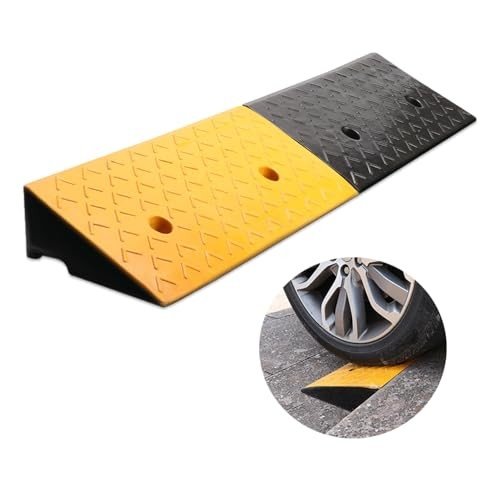Understanding Mobility Scooter Ramps: A Comprehensive Guide
Mobility scooter ramps are essential tools that boost accessibility for people who rely on mobility scooters. They supply a means for users to browse various surfaces and overcome physical barriers with ease. This blog will look into the types, advantages, picking requirements, installation, upkeep, and even particular regularly asked concerns, supplying a comprehensive understanding of mobility scooter ramps.
What are Mobility Scooter Ramps?
Mobility scooter Removable Ramps For Wheelchairs are likely surface areas that assist users in transitioning between numerous heights. Commonly discovered in both property and public areas, these ramps assist in simple access to structures, lorries, and outside locations, making mobility scooters much more user-friendly.
Types of Mobility Scooter Ramps
Understanding the types of ramps readily available can help users pick the best one for their requirements. The following table sums up the main types of mobility scooter ramps:

| Type | Description | Perfect Use Case | Weight Capacity |
|---|
| Folding Ramps | Lightweight, portable ramps that can be folded for easy storage | Short-term use, travel, or temporary requirements | Up to 800 pounds |
| Wheelchair Ramp Ramps | Wider ramps fit for both mobility scooters and wheelchairs | Long-term installations, public access | As much as 1000 pounds |
| Limit Ramps | Small ramps designed to bridge entrances and small height changes | Transitioning in between rooms or from outdoors to inside your home | As much as 600 pounds |
| Lorry Ramps | Durable ramps designed for loading scooters into vehicles | Transport of scooters in vans or SUVs | As much as 1200 pounds |
| Strong Ramps | Permanent, durable ramps made from resilient materials | Long-term installations at homes or organizations | Varies (consult specs) |
Benefits of Mobility Scooter Ramps
Using mobility scooter ramps has a number of benefits:
- Increased Accessibility: Ramps offer access to locations that might otherwise be unreachable, making sure that mobility scooter users can navigate their environments more easily.
- Improved Safety: By providing a smooth incline, ramps minimize the risk of mishaps such as falls, benefiting both users and caregivers.
- Independence: Users can enter and out of vehicles, homes, or facilities without needing assistance, improving confidence and independence.
- Flexibility: Ramps can be found in numerous designs and sizes, accommodating various requirements from home usage to mobility at public areas like mall and parks.
- Reduce of Installation: Many ramps, especially folding and threshold models, are easy to set up and can frequently be done without professional assistance.
Choosing the Right Mobility Scooter Ramp
Choosing the suitable ramp involves careful consideration of a number of elements. Here are some bottom lines to consider:
| Factor | Description | Recommendation |
|---|
| Height | Procedure the height that needs to be bridged | Select a ramp with an ideal slope ratio (1:12 ratio for accessibility). |
| Weight Capacity | The total weight of the scooter and the user. | Ensure that the ramp can support a minimum of 20% more than the combined weight. |
| Material | Common materials include aluminum, fiberglass, and plastic. | Select based upon durability, weight, and meant use. |
| Length | Consider readily available space for ramp extension. | Longer ramps provide gentler slopes, making them much easier to navigate. |
| Portability | Figure out if you need a permanent or portable ramp. | Choose folding ramps for travel; solid ramps for long-term setups. |
Installation of Mobility Scooter Ramps
Setting up a mobility scooter ramp can be straightforward, specifically for those opting for portable or threshold choices:
- Measure the Height: Evaluate the height in between the ground and the landing area (like a porch or car).
- Choose the Right Ramp: Based on the height and weight capacity needed.
- Prepare the Area: Ensure the ground is steady and the landing location is clear from blockage.
- Secure the Ramp: For completely set up ramps, consult the producer's guidelines for anchoring. Portable ramps should be placed firmly to avoid slipping.
- Regular Check: Ensure that the ramp remains steady and safe after installation, inspecting for signs of wear or damage.
Maintenance of Mobility Scooter Ramps
To ensure the longevity of ramps and the safety of users, upkeep is crucial:
- Regular Inspection: Check for any signs of wear, rust, or instability.
- Cleaning: Regularly tidy the ramp to remove dirt and debris, which may cause slips.
- Lube Hinges: For folding Mobile Ramps For Wheelchairs, ensure to lube any hinges or moving parts to guarantee smooth operation.
- Inspect Weight Limits: Always abide by specified weight limits and scan for extreme wear marks.
Frequently Asked Questions (FAQ)
Q1: Can I use a mobility scooter ramp for my wheelchair?A1: Yes, many mobility scooterramps can accommodate wheelchairs also. However, guarantee that the ramp is large enough and has an appropriate weight capability. Q2: Are there any laws concerning using ramps?A2: Yes, numerous policies worldwide may determine the specs for public ramps(
like ADA in the United States ). It's best to familiarize yourself with these guidelines. Q3: How do I determine the suitable ramp length?A3: A frequently followed guideline suggests a 1:12 slope.
For each inch of height, a ramp should be 12 inches
long. Q4: Can I install a mobility scooter ramp myself?A4: Yes, numerous ramps are user-friendly and can be set up without an expert, particularly Portable Wheelchair Ramp options. However, for permanent ramps, seeking advice from with a professional might be useful. Mobility Ramp scooter ramps serve crucial functions in promoting self-reliance and ease of access for users. Comprehending the various types, benefits, installation procedures, and upkeep techniques can make sure a safe and satisfying experience. When making choices about mobility services, purchasing a quality ramp is an essential action toward enhancing everyday mobility for those who need it.


